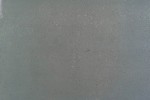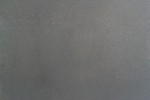Interior Life Herbert Read Gallery
In a recent magazine interview the philosopher Peter Sloterdijk remarks that the human need for an interior space is a primary need. Interior Life presents new work by five artists who in different ways picture or construct interior spaces and in doing so establish a place in which to reflect upon the feeling and meaning of this need. The diversity of work in this exhibition could be said to underline the fact that any attempt at a succinct summary of this need is insufficient to contain the multiplicity of experiences and thoughts that circulate between a body and the space that operates to enclose it. Even the simple act of locating an interior may not be as simple as it seems, a point highlighted by Natasha Kidd’s painting installations where the paint that is pumped over a surface/wall literally runs away from us.
The materiality of contemporary interiors plays a central role here and finds itself reflected in various ways in many of the works exhibited. This is not least because the commodification and instrumentalization of the contemporary interior may move to eclipse or even remove time and memory from the surface of a ‘living room’ and, in effect, inhibit what might be called the deep occupation of a space. Mary Maclean’s meticulously constructed photographs dwell on this blankness but through a visualizing reverie she finds traces and anticipations of a presence on the surface of functional forms. This psychological impulse to transform a space is extended in the stage like scenes painted by Camilla Wilson. Their suggestions of intimacy are ambiguous, however. Representational devices function both to draw the viewer in and to frustrate the desire for a total possession of space.
One consequence of the critical attention given to the public realm is that interior or a private space can become negatively defined as a retreat. Like the paint walls of Kidd, Donszelmann uses materials to reanimate space and introduce an elasticity between body and space that metaphorically folds the two distinct realms into one another. The interior here is conceived responsive to the needs and movements of an occupying body rather than a fixed and static enclosure. This interdependence between bodies and space runs through the exhibition and in Tim Renshaw’s paintings for tabletops the relationship is pictured as a series of plans that fuse modular proportions designed with bodies in mind using Bruno Taut’s colour alphabet that would chart a space according to sensations.
Exhibition organized by Outside Architecture
Interior Life 2-27 November 2010, Herbert Read Gallery, UCA, New Dover Road, Canterbury
Bernice Donszelmann, Natasha Kidd, Mary Maclean, Tim Renshaw, Camilla Wilson






